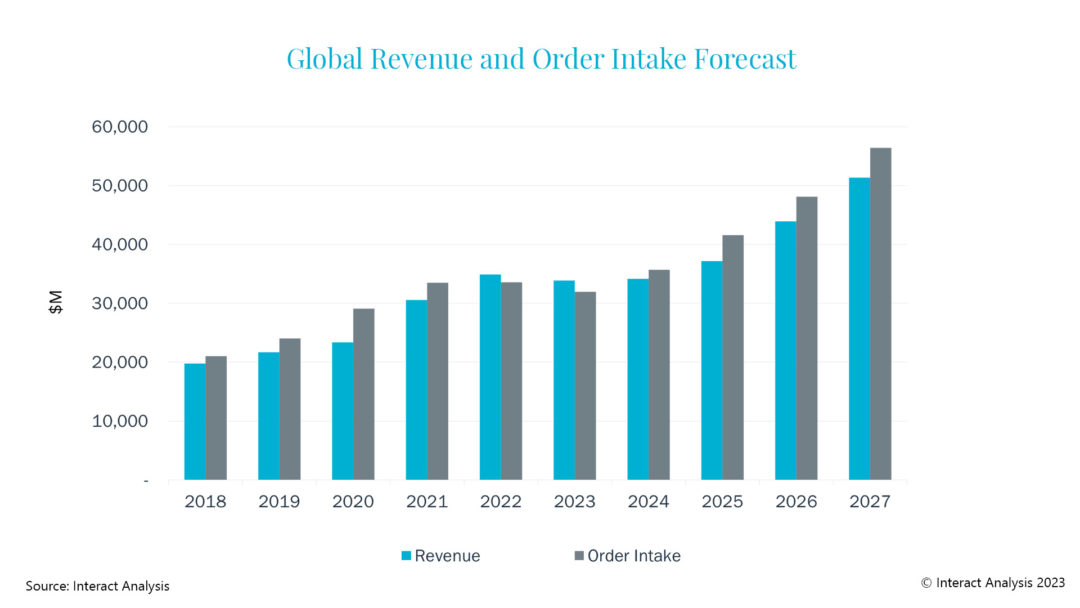Warehouse automation market to regain momentum in 2024 and 2025
Revenues expected to return after turbulent e-commerce sales threw a wrench into 2023 results, Interact Analysis says

The warehouse automation market has suffered a tough 2023, but order intake will begin to grow again in 2024 at a low rate and revenues are expected to return to double digit growth from 2025 onwards, according to the consulting firm Interact Analysis.
Markets saw a significant increase in e-commerce orders in 2019/2020 thanks to the pandemic and record low level interest rates, leading to an uptick in warehouse construction and therefore, an increase in warehouse automation sales, the London-based firm said.
But a subsequent slowdown in e-commerce sales and a rise in interest rates triggered a decline in warehouse construction and warehouse automation investments. Order intake for fixed automation will have contracted by around -8% in 2023, but order intake for mobile automation is expected to grow by 38% over the year, providing a buffer against the overall market decline.
The slowdown is being felt most in vertical markets with high exposure to e-commerce such as general merchandise, grocery, and apparel. These are often referred to as downstream verticals because they are downstream in the supply chain and closer to the consumer. On the other hand, upstream verticals like durable manufacturing have performed relatively well, driven by the trend towards near-shoring and the resulting construction of factories in the US and Europe. The durable manufacturing sector in fact is expected to have been the fastest growing vertical market for warehouse automation in 2023 with a revenue growth of 6%.
“The rise and fall of warehouse construction has led to a corresponding increase and decrease of end-to-end warehouse automation solutions,” Rueben Scriven, research manager at Interact Analysis, said in a release. “Greenfield sites are well suited for large and complex end-to-end solutions, while brownfield sites are better suited to smaller point solutions that automate particular workflows, such as mobile robots. Because the share of brownfield sites has now increased, the share of point solutions (relative to end-to-end solutions) has also increased. Therefore, automation vendors that can provide solutions for brownfield sites and distribution center automation projects will fare well in the short term.”
Related Articles
Copyright ©2024. All Rights ReservedDesign, CMS, Hosting & Web Development :: ePublishing